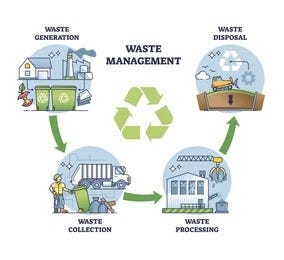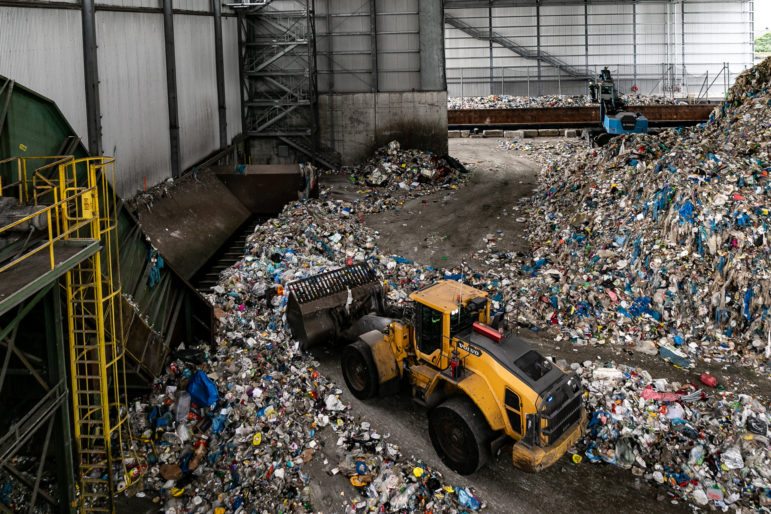Just How Recycling Lives Services Help In Reducing Ecological Footprints
Just How Recycling Lives Services Help In Reducing Ecological Footprints
Blog Article
Recognizing the Classification and Handling of Numerous Kinds of Waste
Effective waste monitoring is critical for ecological sustainability, calling for a detailed understanding of the category and handling of numerous waste kinds. Home waste, commercial byproducts, unsafe materials, electronic refuse, and organic remnants each require unique methods to make certain safety and minimize environmental damages. Implementing appropriate segregation, therapy, and disposal strategies is necessary to reduce negative ecological influences and promote resource preservation. For example, the composting of organic waste contrasts dramatically with the intricate procedures needed to manage dangerous compounds. This diverse strategy to waste management underscores its intricacy and the crucial need for specialized understanding in this domain name.

Family Waste
Household waste, including a broad range of discarded materials created from daily living activities, stands for a considerable part of the overall waste stream - recycling lives services. This classification consists of organic waste such as food scraps, lawn trimmings, and paper products, together with not natural products like plastics, metals, and glass. The varied nature of house waste necessitates efficient category and monitoring to reduce environmental effect and advertise sustainable living practices
Reliable household waste monitoring begins with segregation at the resource, assisting in recycling, composting, and safe disposal. Organic waste, for circumstances, can be composted to create nutrient-rich soil modifications, decreasing land fill problem and enhancing dirt health. Recyclable products, including paper, glass, and particular plastics, can be processed and repurposed, preserving resources and reducing energy intake connected with new material manufacturing.
In addition, unsafe family waste such as batteries, electronic devices, and cleansing chemicals needs specialized managing to stop soil and water contamination. Public awareness projects and practical disposal alternatives play critical roles in ensuring appropriate disposal and recycling of these products. By executing durable waste reduction approaches and fostering community involvement, towns can considerably reduce the environmental footprint of house waste.
Hazardous Waste
Industrial waste, a major factor to global waste generation, includes a varied range of materials generated by manufacturing, building, and other industrial tasks. This classification consists of by-products such as scrap metal, plastics, rubber, chemicals, and various other residues. The structure and volume of industrial waste can differ dramatically depending on the sector and manufacturing procedures entailed. Efficient management of industrial waste is vital for decreasing ecological influence and advertising lasting methods.
The handling of hazardous waste commonly entails a number of processes: collection, segregation, disposal, and treatment. Collection systems are created to successfully gather waste materials from numerous resources within a commercial procedure. Partition is important, as it makes sure recyclable materials are divided from non-recyclable ones, which can be guided towards appropriate recycling or disposal networks. Treatment procedures, including physical, chemical, and biological approaches, are utilized to reduce the poisoning, volume, and ecological effect of the waste. Disposal approaches like landfilling or incineration are utilized for waste that can not be recycled or dealt with.
Embracing techniques such as waste reduction, source healing, and recycling can dramatically reduce the concern of hazardous waste on the environment, contributing to more sustainable commercial methods.
Contaminated Materials

Corrosive wastes can harm or ruin living products and cells. Combustible wastes can easily stir up, posturing fire risks, while reactive wastes can create explosions or launch poisonous gases upon contact with various other compounds.
Effective contaminated materials monitoring includes several crucial practices: identification and partition of harmful materials, risk-free transport and storage space, and ideal treatment and disposal. Therapy methods may consist of chemical neutralization, stablizing, and incineration. Regulatory compliance is vital, led by frameworks such as the Source Conservation and Recuperation Act (RCRA) in the United States, which makes sure eco sound and safe monitoring of hazardous waste.
Digital Waste
Digital waste, often abbreviated as e-waste, represents an expanding obstacle in waste monitoring due to the quick obsolescence of technology. This classification incorporates a broad series of disposed of digital gadgets, consisting of smart devices, computer systems, televisions, and household appliances. The complexity of e-waste depends on its structure; these products consist of a combination of beneficial materials such as gold and copper, as well as dangerous compounds like cadmium, lead, and mercury.

Legislation and laws, such as the European Union's Waste Electronic and electric Devices (WEEE) Instruction, objective to promote accountable e-waste management. These plans mandate manufacturers to assist in the collection and recycling of electronic items, thereby minimizing the burden on landfills and decreasing environmental contamination.
Organic Waste
Organic waste, incorporating biodegradable products such as food scraps, yard trimmings, and agricultural deposits, constitutes a considerable portion of the metropolitan solid waste stream. This kind of waste is remarkable not only for its quantity yet also for its possible environmental influence if not handled appropriately. Organic waste can decompose published here anaerobically in garbage dumps, generating methane, a potent greenhouse gas contributing to environment adjustment.
Proper handling of natural waste entails several techniques. Composting is an extensively adopted method, transforming natural products into important compost that can enhance soil and support sustainable agriculture. This procedure likewise minimizes the quantity of waste sent out to land fills. An additional approach is anaerobic digestion, which breaks down organic matter in the absence of oxygen, creating biogas that can be made use of as a renewable resource source. Additionally, diverting food waste from landfills with donation programs can ease food instability while decreasing waste.
Municipalities and organizations are significantly identifying the relevance of natural waste monitoring. Carrying out detailed organic waste recycling programs not only alleviates environmental impacts yet additionally lines up with wider sustainability goals, promoting a round economic situation where resources are continuously reused and repurposed.
Conclusion
Effective waste management and ecological security require an extensive understanding of the classification and handling of different waste types. Carrying out suitable techniques for each waste kind ensures liable and safe waste monitoring practices, ultimately contributing to the defense of environments and public health.
Efficient waste monitoring is critical for ecological sustainability, requiring a detailed Discover More Here understanding of the category and handling of various waste kinds.Home waste, including a wide range of thrown out materials produced from day-to-day living activities, stands for a significant part of the total waste stream.Industrial waste, a major contributor to international waste generation, encompasses a varied range of products generated by production, building and construction, and other commercial activities (recycling lives services).Unsafe waste, a crucial concern in waste administration, consists of materials that posture considerable threats to human health and wellness and the environment due to their harmful, harsh, combustible, or reactive residential properties.Organic waste, encompassing naturally degradable materials such as food scraps, yard trimmings, and agricultural residues, makes up a considerable portion of the local strong waste stream
Report this page